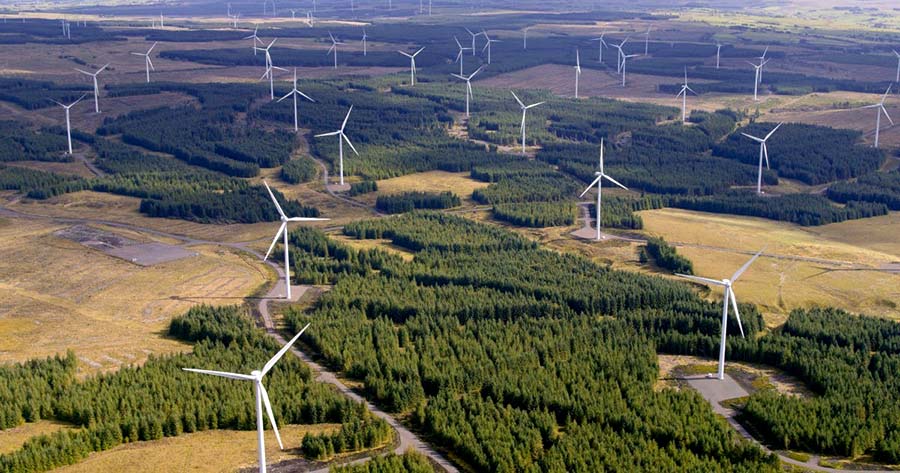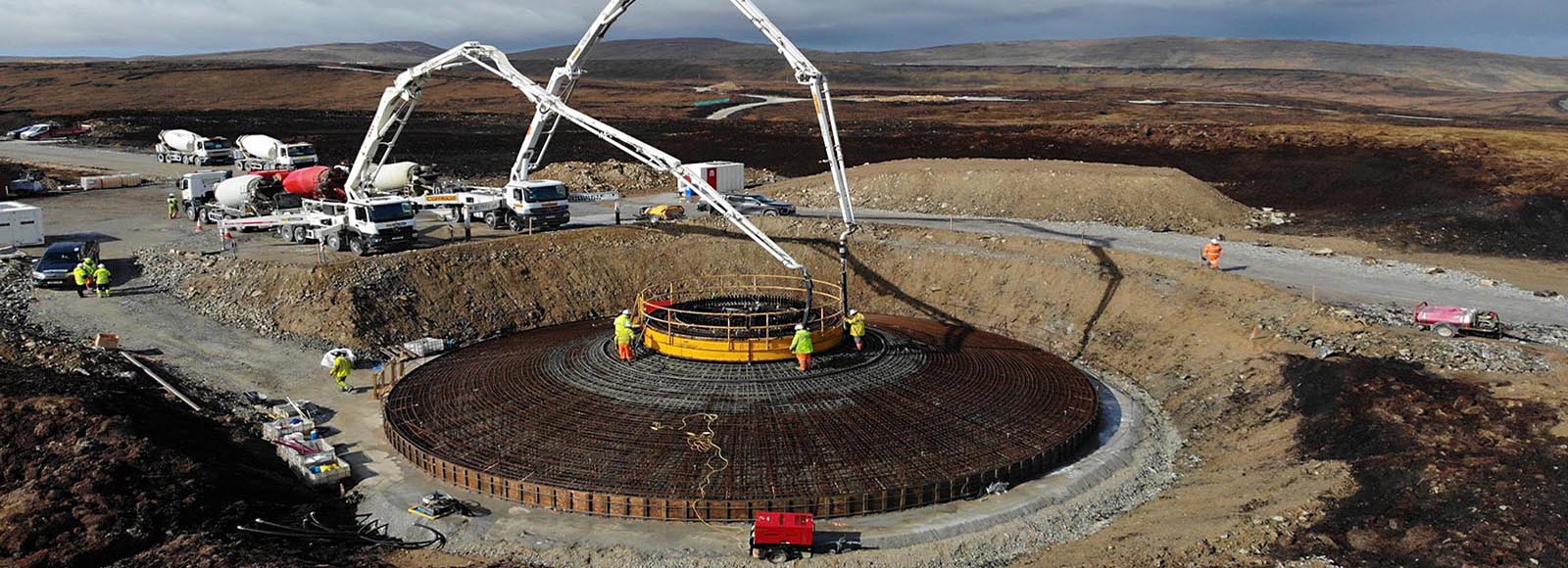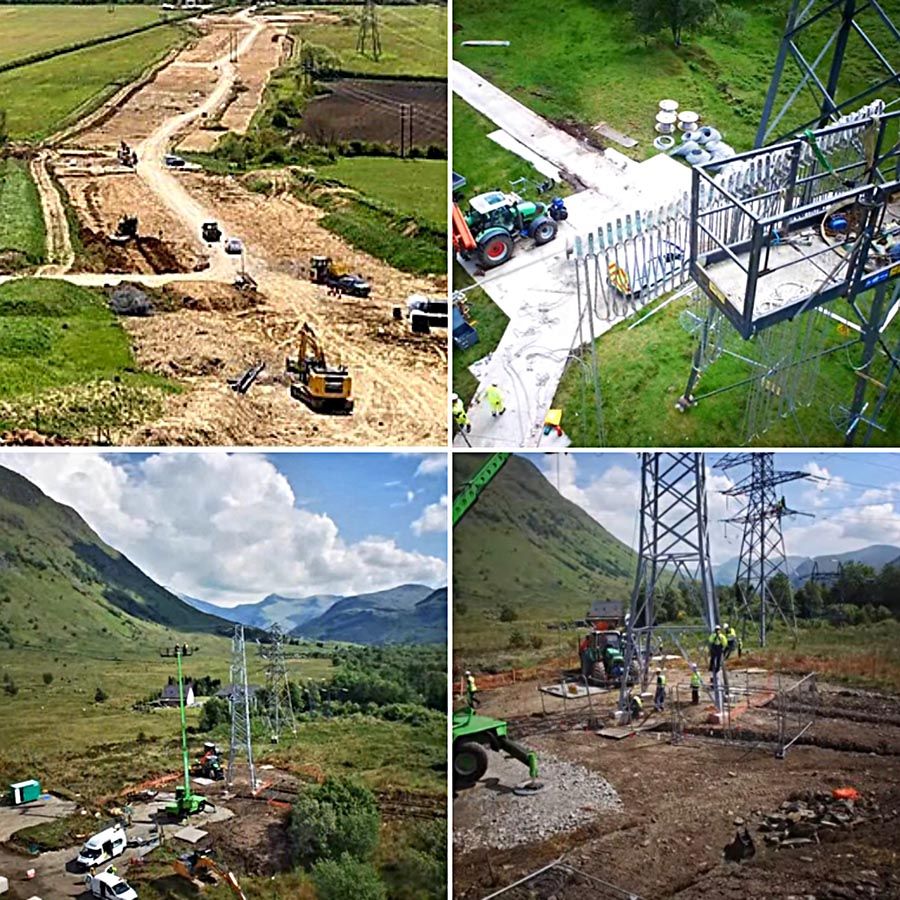Impact of the proposals
Local communities and their heritage
Local rural communities worldwide serve as the custodians of their natural spaces and the ecosystem benefits they offer. They should have a say in and, importantly, the power to veto, how and whether their natural resources are utilised and exploited.
The proposed area is abundant in archaeological and historical sites, some of which are scheduled, some not, and some are yet to be discovered. The Welsh identity is inextricably linked to the land, and if we allow our land to be devastated, the music, songs, and myths of Wales will lose their meaning and vital connection with the land.
Since the proposals were announced, many individuals have been under significant stress. This stress will have negative effects on physical and mental health, and livelihoods.
The local communities most affected by these proposed developments will endure severe negative impacts while Bute and Green GEN collect the profits. The energy produced will be transmitted to the National Grid in England.
In East Anglia, the National Grid proposals are already affecting property prices and a number of mortgage lenders have refused to offer mortgages on properties near pylons and substations as shown in the example below.

Visual Impact
The turbines in this area will be significantly taller than any others on the UK mainland. They will dominate the landscape and will be visible for miles in every direction across the open uplands. Placing large turbines, or even groups of smaller, turbines within the upland region would ruin the landscape's sense of space, openness, and tranquillity.

Farming
The hugely unpopular Sustainable Farming Scheme is being reviewed, and its implementation has been postponed until 2026. However, the uncertainty of what will follow still hangs over the farming industry.
In addition to this, many small-scale family farms here are at risk due to the installation of industrial-scale turbines, associated power transmission lines, and related infrastructure.
Environment
The Cambrian Mountains provide us with many irreplaceable ecosystem benefits that are vital for combating climate change and addressing the nature and biodiversity emergency. These benefits include carbon storage in upland peat soils, carbon sequestration from blanket bogs, natural flood prevention through water storage, and ecosystem connectivity and biodiversity.
“The Cambrian Mountains’ blanket bogs, in addition to acting as a huge rainwater sponge slowing the release of rainwater into streams and rivers, have the potential to sequester enormous amounts of carbon.” (Cambrian Mountain Society)
Peatland requires thousands of years to build up, but would be destroyed instantly by the extensive digging and construction works. The destruction would be permanent. The massive 25m diameter reinforced concrete turbine bases, 3.5 metres deep and requiring in the region of 2000 tons of concrete, would be there forever.
Any proposed ‘mitigations’ would be worth very little. There is typically little or no monitoring or enforcement of conditions that may be attached to planning (or indeed offered by Bute themselves). Even when initially installed or carried out, the whole development will be sold at least once or probably multiple times over the years, and any existing ‘mitigations’ will inevitably be forgotten or ignored.
“The construction of modern marine-scale turbines …would have an irreversible impact on the rare and fragile habitats for which the uplands are prized, and by extension on those birds and animals which depend on them either for permanent homes or as part of their migration routes north and south” (CMS)
Well-being of Future Generations and the climate and nature emergency
The Welsh Government is rightfully proud of its 2015 legislation, the Well-being of Future Generations Act. Introducing large industrial-scale turbines in a beautiful, non-industrialised area without the consent of local communities would directly contradict the legislation's stated aims and have destructive impacts on nature and ecosystem benefits.
Wales has a national responsibility to tackle the climate crisis and halt the decline in biodiversity. It needs to enhance the status of species and ecosystems by 2030 and ensure their full recovery by 2050. However, these proposals are counterproductive in achieving that goal.
These proposals will endanger long-standing conservation projects for Red Squirrels and Pine Martens. The unforgiving nature of turbine blades will also threaten many bats and birds, including Curlews and our beautiful Red Kites, which were slowly brought back from extinction over the past 30 years. Installing these industrial landscapes would destroy large areas of blanket bog and everything that thrives within it.
The Construction Phase
Green Gen and Bute Energy's negative impact will be far-reaching.
Each of Bute Energy's 230-meter-tall turbines will require substantial construction materials in each turbine base.

These concrete bases will be permanently embedded in the hills, destroying peat bogs that have been locking in thousands of tonnes of CO2. Additionally, roadways and crane pads will need to be constructed. These projects will adversely affect wildlife, water retention, and local hydrology. Some homes in the area depend on private water sources. It's crucial to consider the impact on local residents. Access to water is a basic necessity, not a privilege.
The Towy Teifi Pylon line would rip the heart out of, and split up, local well-established family farms. Undergrounding is currently not an option that Green GEN is prepared to look at. So, hedges, fences and walls would be removed, and crushed rock brought in to surface the haul roads. Pylon bases and crane pads would see even more concrete poured into our landscape. The route would be fenced off for the two-year construction period. The land would be out of production for that time, and it is unlikely to fully recover from this. The viability of those farms is at risk.

Lan Fawr Energy Park. We currently do not have any details, or estimated construction figures, for the 40 x 230m turbines at Lan Fawr. However, you can gauge its impact by looking at a key facts document on the RE-think website. It is from the statutory consultation at Nant Mithil Energy Park in Radnor Forest, Powys.
Blade Transport
The turbine blades would be delivered to Swansea Docks and travel to the site by road. They would leave the A40 at either Llanwrda or Talley (both roads are being considered) and travel up the A482 towards Lampeter, turning off near The Dolaucothi Goldmines at Pumpsaint. They would then travel along forestry tracks to reach their destination.
How do turbine blades travel on rural roads? Find out here….

Tourism and the local economy
Many people return time after time to enjoy this area for its warm hospitality, tranquillity, abundant nature and beautiful environment. It is conveniently positioned to enjoy the coast, the mountains, and the countryside.
The timeline for building these industrial infrastructure projects will be counted in years, disrupting everyday life, and threatening tourism's economic future. Who will want to spend their holidays in a construction area? Will it ever recover?
The turbines will be equipped with aviation lighting, which could negatively impact the dark sky status of our local designated sites which are a major attraction.
Dark Skies Guide - Cambrian Mountains
Community Benefits Fund?
Historically, communities have benefited from hosting renewable energy schemes within their vicinity. This is not the case with the proposals in front of us.
The initial consultation brochure for the Green GEN Towy Teifi project introduced "Bute Energy's Community Benefit Fund" (CBF). However, the figures provided are vague and do not align with a recent report we received from the statutory consultation for the Nant Mithil Energy Park proposal at Radnor Forest.
RE-think spoke with Catryn Newton, the Bute Community Benefit Director, at the Dolau consultation to gain more insight into the ambitious promises that are being discussed during consultations and possibly in closed-door council meetings. Some noteworthy points from the meeting include:
- The individual wind farm companies are responsible for making contributions to the Community Benefit Fund (CBF). These companies are limited liability subsidiaries, and if they fail to make a payment, the CBF will not be able to seek recourse against their owners or developers.
- The commitment to make contributions for 40 years has been quietly dropped as it was recognised this was unrealistic given possible future financial and technical problems with wind farms.
- Only one large CBF will be formed to manage the contributions from all the Bute wind farms, regardless of locality or region. Apart from being bureaucratic, this effectively removes local accountability.
- First trustees of the CBF will be recruited by advertisement - overseen by Bute’s recruitment agent.
- Applications for grants will be awarded based on applications after assessment by the Trustees and an “investment team”.
Community benefit is not a planning issue. However, its flaws should be widely known, especially if the purpose of the CBF is to buy local goodwill.